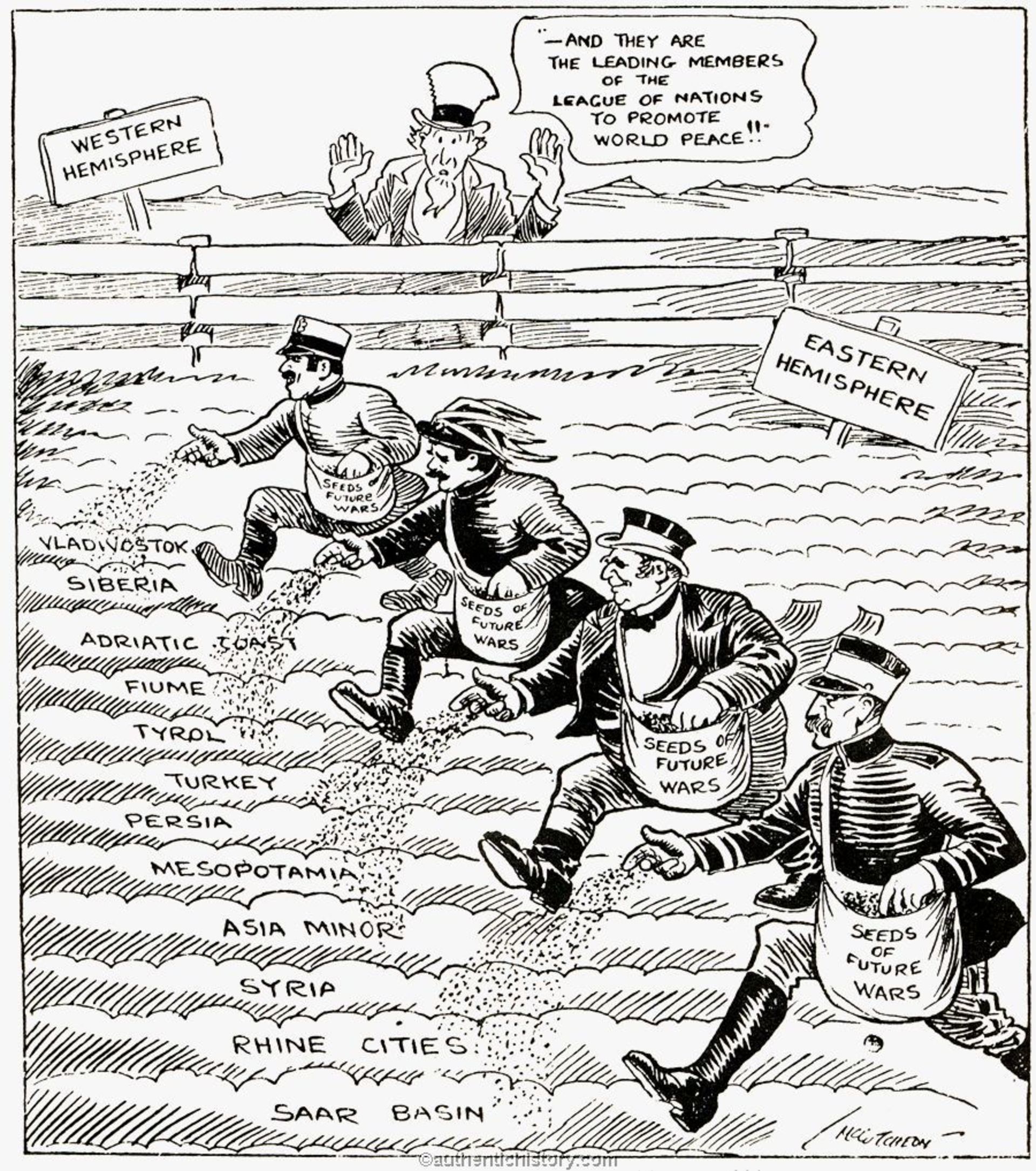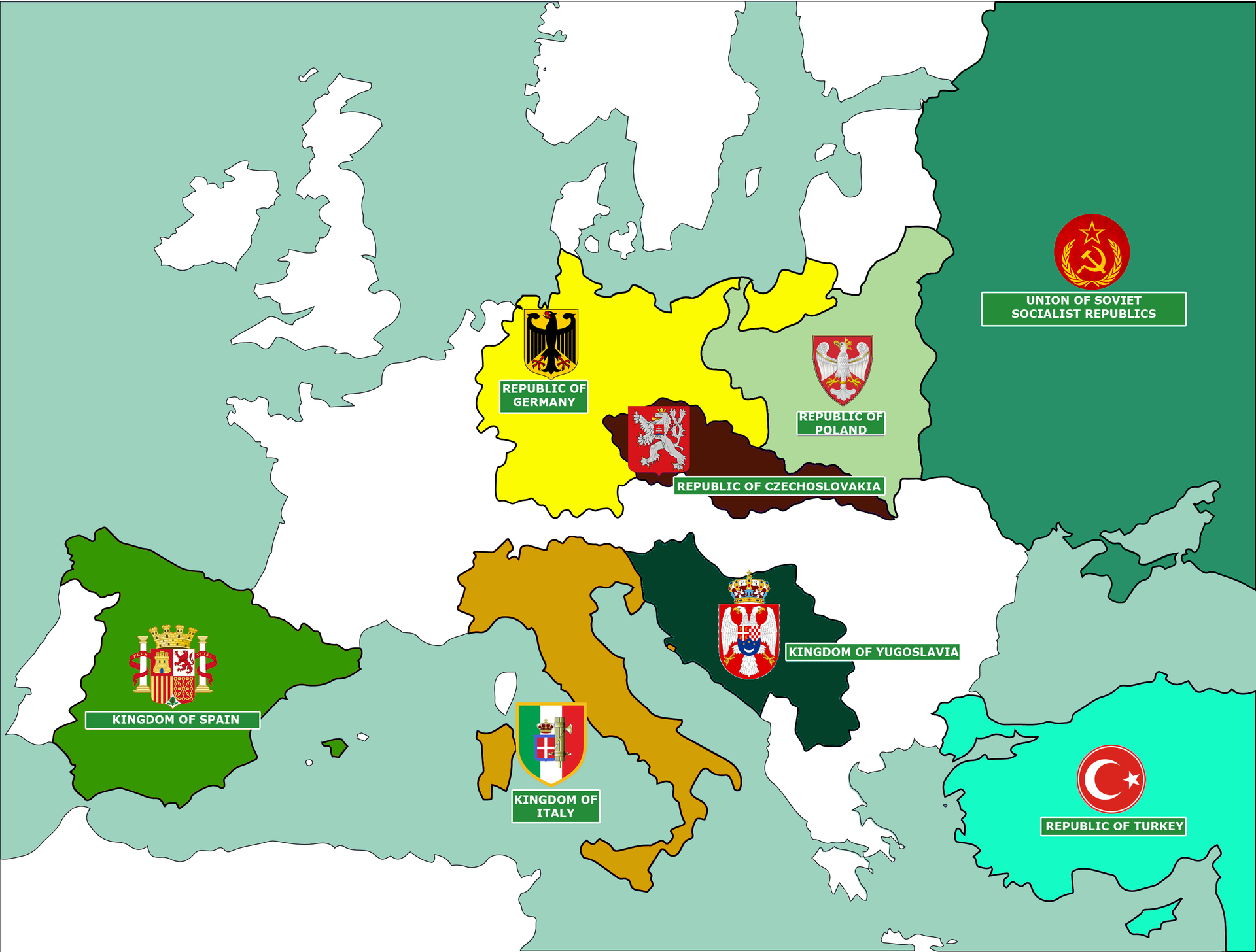European Championship 1930
The Paris peace treaties, tailored after World War I by the winning powers, were no basis for a stable peace from the beginning, since the defeated countries felt they were greatly punished in terms of territory and compatriots who became minorities in other countries. The treaties brought a thorough change in the political map of Europe. Four great empires disappeared (Ottoman, Austro-Hungarian, German, Russian), and many new countries were created in their former territories (Czechoslovakia, Poland, Latvia, Lithuania, Estonia, Hungary, Kingdom of Serbs, Croats and Slovenes).
Despite the fact that endless trench warfare massacres between the Allies and the Germans on the Western front in WW I led to a stalemate, Germany was forced by exhaustion of human and material resources to capitulate in November 1918. Numerous national countries were created by the Paris peace treaties that followed. Their creation was based on two criteria: self determination of the people and attribution of rewards or punishments (based on which camp they were in during the war). New countries were created as a product of national aspirations, but they were formed by the winners as zone from the Baltic to the Black Sea and the Adriatic that was supposed to present a barrier (Cordon sanitaire) against the penetration of the socialist revolution into Europe. Unrelated to Paris, in the years after the war and bloody confrontations, the Irish Free State was founded. It would encompass nearly the entire island, with the exception of the Protestant north, which would remain loyal to London.
Unlike the formally democratic where the social system that could be called capitalism was formed, in which a relatively small number of rich people who owned capital and largely shaped economic, social, cultural, and political events in the country, the socialist system of society was created in Russia in the period between the world wars. Despite in theory aspiring to a communist system and claiming to represent Marx’s ideas in practice, in reality no one would ever achieve what they thought and wrote about. Moreover, attempts to implement them would bring about an enormous number of crimes against the population. The rise, support and blind following of communism in the USSR, fascism in Italy, and especially Nazism in Germany later on, can be comprehended only if they are observed as political religions. They are more spiritual than political ideologies and came about as a response to the “crisis of meaning” in people, with the goal of creating paradise in this world. They are characterized by governments that require a complete acceptance of the dogma of official ideology, that try to enter all spheres of life and, thus, take on characteristics of a religion such as holy books, holy teachings, saints, believers, inquisition (secret police), the motif of struggle of good vs. evil, the motif of salvation and recovery of honor, etc. Because of this, political religions usually persecuted and tried to replace existing religions. This could only be done though a different system of doctrine and such a system would, from its beginning, assume psychological characteristics of a religion – the same sanctity, rigidity, intolerance, and prohibition of opinion – for its own protection.
Italy remained a kingdom, but the Fascist Party assumed authority. A large number of European countries in the period between the wars had authoritarian regimes (Hungary, Poland, Yugoslavia, Spain, Portugal, Austria, Romania, Albania, Bulgaria, Lithuania, Latvia, Estonia and Finland), headed by nationalists who had numerous similarities with fascism in Italy, despite often not being fond of it in their own countries. There were also numerous movements inspired by fascism and Nazis, but not one of them was a faithful copy of another. Despite the fact that differences are sometimes difficult to perceive, equalizing all nationalists with fascism causes a loss of insight into specific political and societal circumstances in European countries in the period between the wars. In the end, the main distinctive features were the degree of tolerance of opposition, lack of plans of expansionist aggression in authoritarian regimes, as well as their hostility to the appearance of fascist movements on home turf.

Sources
- Michael BURLEIGH, Treći Reich : nova povijest, Zaprešić, 2012.,
- Niall FERGUSON, Civilizacija: Zapad i ostali, Zagreb, 2012.
- Grupa autora, Povijest: Prvi svjetski rat i poslijeratno doba (1914. - 1936.) , knjiga XVI., Zagreb 2008.
- Grupa autora, Povijest: Prvi svjetski rat i poslijeratno doba (1914. - 1936.) , knjiga XVI., Zagreb 2008.
- Eric J. HOBSBAWM, Doba ekstrema : kratko dvadeseto stoljeće 1914.-1991, Zagreb, 2009.
- Eric J. HOBSBAWM, Kako promijeniti svijet : priče o Marxu i marksizmu, Zagreb, 2014.
- Vjeran KATUNARIĆ, Sporna zajednica : novije teorije o naciji i nacionalizmu, Zagreb 2003.
- Dimitrije BIRAČ, ''Realnost neoliberalizma u Hrvatskoj'', http://www.index.hr/novac/clanak/komentar-dimitrija-biraca-realnost-neoliberalizma-u-hrvatskoj/735897.aspx
- ''Prikaz knjige ''Zbornik Nikše Stančića'' '' http://www.historiografija.hr/prikazi.php?id=235959
- Tihomir Cipek, predavanje na kolegiju ''Politička propaganda u totalitarnim režimima'' (Poslijediplomski sveučilišni doktorski studij „Politologija“), Fakultet političkih znanosti, Zagreb, 18.XI.. 2013.
- Football kits: http://dyo.blksport.com/#/
- sources for map: https://en.wikipedia.org/wiki/File:Europe_in_1922.gif , http://geacron.com/home-en/?&sid=GeaCron270726
